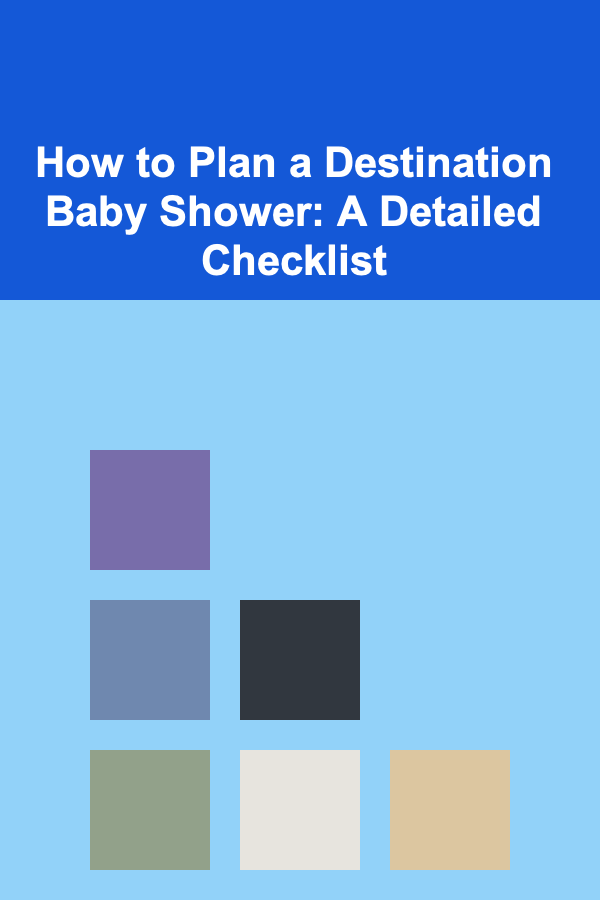
Creativity: Techniques for Unlocking Your Creative Potential
ebook include PDF & Audio bundle (Micro Guide)
$12.99$5.99
Limited Time Offer! Order within the next:

Creativity is often viewed as an elusive and magical quality, something that only a few "gifted" individuals possess. However, creativity is not a talent reserved for the select few---it is a skill that can be nurtured, developed, and unleashed by anyone willing to explore and practice. Whether you're an artist, an entrepreneur, a writer, or simply someone seeking to inject more innovation into your daily life, creativity can enhance your work and enrich your personal growth.
In this guide, we'll dive deep into the nature of creativity, explore how you can tap into your creative potential, and provide actionable techniques for cultivating and nurturing creativity in your life.
Understanding Creativity
Creativity is the ability to generate new ideas, solutions, or artistic expressions. It involves thinking outside the box, making connections between seemingly unrelated concepts, and viewing the world from a fresh perspective. Creativity is not limited to artistic pursuits but is valuable in problem-solving, decision-making, and virtually every area of life.
Despite popular belief, creativity is not just about having "great ideas" on the spot. It's also about the process of experimenting, failing, learning, and refining. Creativity requires patience, persistence, and an open mind.
The Neuroscience of Creativity
To understand creativity on a deeper level, it's helpful to explore how our brains work when we are being creative. The brain has two main networks that are often involved in creative thinking:
- The Default Mode Network (DMN): This network is active when we're daydreaming, mind-wandering, or thinking freely without a specific goal. The DMN is linked to insight and spontaneous creative thoughts.
- The Executive Network: This network helps us focus, plan, and execute. It is essential for refining and bringing creative ideas into reality.
When engaged in creative tasks, both of these networks work together---allowing for spontaneous ideas to emerge and then turning those ideas into actionable plans.
Techniques for Unlocking Your Creative Potential
Unlocking creativity is not about waiting for a "Eureka" moment. Instead, it's about creating the right conditions, engaging in the right practices, and being open to inspiration. Below are several actionable techniques that you can incorporate into your life to unlock and nurture your creative potential.
1. Cultivate a Growth Mindset
One of the biggest barriers to creativity is the fear of failure. People often avoid exploring new ideas because they worry about making mistakes. However, creativity thrives in an environment where mistakes are seen as part of the learning process, not as obstacles.
To cultivate a growth mindset, remind yourself that creativity, like any skill, improves with practice. Don't focus on whether an idea is "good" or "bad"---focus on the process of creation itself. Celebrate the journey, not just the outcome.
2. Embrace Constraints
It may sound counterintuitive, but limitations can actually boost creativity. Constraints force you to think differently, challenge your assumptions, and push the boundaries of what's possible.
If you're working on a creative project, impose constraints on yourself. For example, limit the materials you use, set a time limit for brainstorming, or limit the number of words or pages in a piece of writing. Constraints create a sense of urgency and can lead to more innovative solutions.
3. Engage in Regular Brainstorming Sessions
Brainstorming is one of the most effective techniques for generating ideas. It is not about judging or evaluating ideas during the session---your goal is to let your thoughts flow freely. Give yourself permission to think wildly and come up with even the most outlandish ideas. Remember that creativity often arises from connecting ideas that at first glance seem unrelated.
To make the most out of brainstorming:
- Set a specific goal: Whether you're trying to solve a problem or generate new ideas for a project, focus your brainstorming session on a specific question or objective.
- Use prompts: Write down random words, images, or questions that might trigger new thoughts.
- Go quantity over quality: The goal is to generate as many ideas as possible. You can always refine or combine them later.
4. Take Breaks and Allow Your Mind to Wander
Sometimes the best ideas come when we're not actively trying to be creative. This is why taking breaks and allowing your mind to wander can be incredibly helpful. When we step away from a problem, our brains continue to process the information in the background. This period of incubation often leads to unexpected insights or "aha" moments.
To facilitate this process:
- Take short walks in nature.
- Practice mindful activities like meditation or doodling.
- Do something repetitive, like washing dishes, so that your mind can wander freely.
By giving yourself the space to relax and reflect, you create the ideal conditions for new creative ideas to emerge.
5. Mix and Match Ideas from Different Domains
Creativity often arises from making connections between unrelated fields. Some of the world's most groundbreaking ideas---like the invention of the airplane or the development of the internet---came from people who were able to bridge gaps between disparate ideas and fields of knowledge.
Try to expose yourself to new areas of knowledge and explore different industries, art forms, or disciplines. Then, look for ways to bring concepts from these fields into your creative work. For example, an artist could draw inspiration from science or technology, while an entrepreneur might look at creative solutions in the art world to solve business problems.
6. Practice Mindfulness and Meditation
Mindfulness and meditation are excellent tools for enhancing creativity. Both practices encourage you to clear your mind, be present in the moment, and release judgment. By reducing mental clutter, you can open up space for creative thoughts to flow.
Mindfulness practices such as focused breathing or body scanning can calm the mind and improve focus. Regular meditation helps you build the mental resilience necessary to overcome creative blocks and better manage the pressures that can stifle creativity.
7. Change Your Environment
Your physical surroundings can play a significant role in fostering creativity. A cluttered or uninspiring space can make it difficult to think creatively, while a well-organized and aesthetically pleasing environment can encourage fresh ideas.
- Rearrange your workspace: Moving furniture or changing the layout of your workspace can provide a new perspective.
- Add creative stimuli: Incorporate items that inspire you, such as books, art, or inspirational quotes.
- Work in different locations: Sometimes a change of scenery can spark new ideas. Try working in a park, coffee shop, or even a library to get your creative juices flowing.
8. Collaborate with Others
Collaboration is a powerful tool for sparking creativity. Engaging with others---especially those with different backgrounds and perspectives---can bring new ideas to the table and challenge your own thinking. Working with others can help you break free from your own cognitive biases and lead to innovative solutions.
When collaborating:
- Be open to feedback and constructive criticism.
- Share ideas freely and avoid judging others' thoughts too quickly.
- Respect the diversity of ideas and perspectives that each person brings to the table.
9. Keep a Creative Journal
A creative journal is a powerful tool for capturing your thoughts, ideas, and observations. Keep a journal where you jot down anything that inspires you: dreams, random thoughts, sketches, quotes, or even questions. Over time, you'll be able to look back and see patterns or recurring themes that can lead to new creative ideas.
A creative journal can also help you track your progress and develop your ideas over time. It's a space where you can experiment without fear of judgment or failure.
10. Experiment and Play
Creativity flourishes when we allow ourselves to experiment, take risks, and play. It's easy to get caught up in the need for perfection or the fear of making mistakes, but creativity thrives when we embrace the freedom to explore.
Set aside time for creative play:
- Try new techniques or mediums.
- Make mistakes and learn from them.
- Allow yourself to make things that are imperfect or unfinished.
By creating an environment where experimentation is encouraged, you open up the possibility for new and exciting ideas to emerge.
Conclusion
Creativity is a skill that can be nurtured and developed by anyone, regardless of their background or profession. By implementing the techniques above---such as embracing constraints, taking breaks, collaborating with others, and allowing yourself to experiment---you can unlock your creative potential and use it to enhance every area of your life.
Remember, creativity is not a linear process. There will be moments of doubt, frustration, and failure. But by committing to the creative journey and embracing the practice of thinking differently, you can continually cultivate and expand your creative abilities. Keep pushing the boundaries of your imagination, and you'll discover endless opportunities to create, innovate, and thrive.
Reading More From Our Other Websites
- [Home Maintenance 101] How to Keep Your Home's Electrical Circuit Breakers in Check
- [Personal Care Tips 101] How to Apply Acne Treatment Cream for Optimal Absorption and Effectiveness
- [Organization Tip 101] How to Organize Your Kitchen for Maximum Efficiency
- [Organization Tip 101] How to Incorporate Lighting and Landscaping into Your Pergola Plans
- [Home Party Planning 101] How to Plan a Karaoke Night Party with DIY Decorations and Activities
- [Reading Habit Tip 101] Best Methods for Pairing Podcasts with Your Reading Routine for Multimodal Learning
- [Home Pet Care 101] How to Choose the Right Pet Bed for Optimal Comfort
- [Home Budget 101] How to Start Saving for a Vacation While Managing Your Home Budget
- [Personal Investment 101] How to Navigate Local Real Estate Laws and Regulations
- [Whitewater Rafting Tip 101] Top 10 Must-Visit Rivers for Thrilling Rafting Experiences

How to Create a Soundproof Home Office: Tips from Reddit Users
Read More
How To Appreciate the Emotional Depth of Soul Music
Read More
How to Curate a Vintage Fashion Collection
Read More
10 Tips for Choosing the Best Health Insurance Plan for Families
Read More
How to Plan a Destination Baby Shower: A Detailed Checklist
Read More
10 Tips for Staying Warm While Snowboarding
Read MoreOther Products

How to Create a Soundproof Home Office: Tips from Reddit Users
Read More
How To Appreciate the Emotional Depth of Soul Music
Read More
How to Curate a Vintage Fashion Collection
Read More
10 Tips for Choosing the Best Health Insurance Plan for Families
Read More
How to Plan a Destination Baby Shower: A Detailed Checklist
Read More